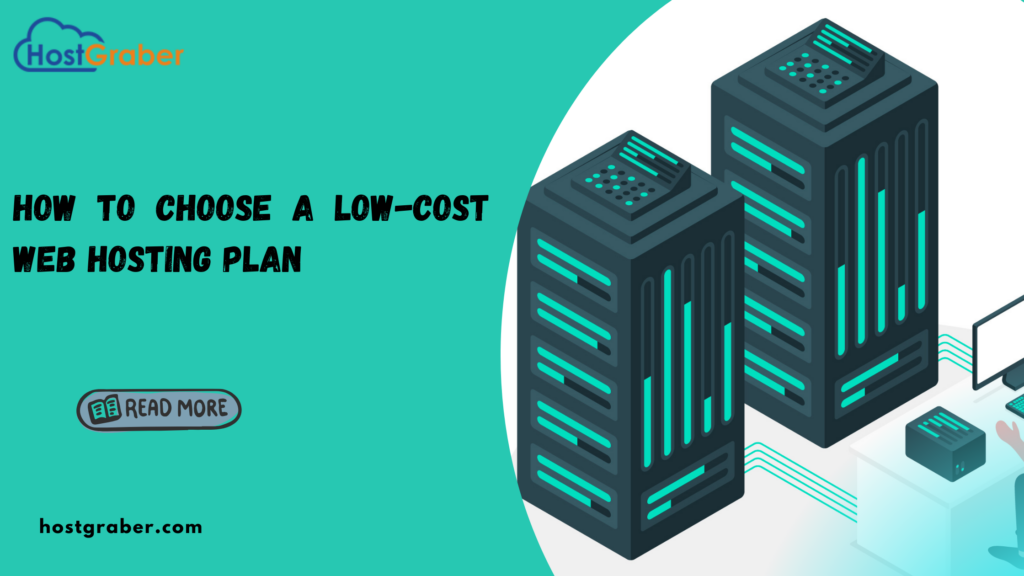In today’s digital landscape, establishing an online presence is no longer a luxury, but a necessity. Whether you’re a budding entrepreneur launching a blog, a small business setting up an e-commerce store, or a creative showcasing your portfolio, web hosting is the foundation upon which your online success is built. However, for many, especially those on a tight budget, the cost of hosting can be a significant hurdle. This is where low-cost hosting comes into play.
The allure of affordable web hosting is undeniable, but the challenge lies in striking a balance between cost-effectiveness and performance. You don’t want to sacrifice speed, reliability, and security for the sake of saving a few dollars. This comprehensive guide will equip you with the knowledge and tools to navigate the world of low-cost web hosting, ensuring you make an informed decision that aligns with your specific needs.
Understanding Your Hosting Needs: The Foundation of Your Decision
Before diving into the sea of hosting providers and plans, it’s crucial to understand your specific requirements. Ask yourself the following questions:
What type of website are you building? A simple blog requires less resources than a complex e-commerce site.
How much traffic do you anticipate? If you expect a surge in traffic, you’ll need a plan that can handle it.
What platform will you use? WordPress, Joomla, or a custom-built site? Some hosting plans are optimized for specific platforms.
What level of technical expertise do you possess? Are you comfortable managing server configurations, or do you need a user-friendly control panel?
What are your storage and bandwidth requirements? Consider the size of your website files and the amount of data transfer you’ll need.
Answering these questions will provide a clear picture of your hosting needs, allowing you to narrow down your options and avoid overspending on unnecessary features.
Types of Low-Cost Web Hosting: A Breakdown
Low-cost hosting typically falls into one of the following categories:
Shared Hosting:
This is the most affordable option, where your website shares server resources with numerous other websites.
Ideal for beginners and small websites with low traffic.
Pros: Budget-friendly, easy to set up, and often includes a user-friendly control panel.
Cons: Limited resources, potential for performance issues due to shared server load, and less control over server configurations.
Virtual Private Server (VPS) Hosting:
Offers a virtualized server environment, providing more resources and control than shared hosting.
Suitable for growing websites with moderate traffic and those requiring custom software installations.
Pros: More resources, improved performance, and greater control over server configurations.
Cons: More expensive than shared hosting, requires technical expertise for server management.
Cloud Hosting:
Utilizes a network of interconnected servers, providing scalability and reliability.
Ideal for websites with fluctuating traffic and those requiring high availability.
Pros: Scalability, reliability, and pay-as-you-go pricing.
Cons: Can be more expensive than shared hosting, and pricing can be complex.
Key Factors to Consider When Choosing Low-Cost Hosting:
Pricing and Value:
Don’t just focus on the initial price. Consider the renewal fees, add-on costs, and the overall value you’re getting.
Look for hosting providers that offer transparent pricing and avoid hidden fees.
Analyze the included features, such as storage, bandwidth, email accounts, and SSL certificates.
Performance and Reliability:
Uptime is crucial for any website. Look for hosting providers that guarantee at least 99.9% uptime.
Check server response times and load speeds. A slow website can deter visitors and negatively impact SEO.
Look for reviews on third party sites.
Storage and Bandwidth:
Ensure the hosting plan provides sufficient storage for your website files and bandwidth for data transfer.
Consider your website’s current and future needs.
Unlimited bandwidth is often marketed, but read the fine print, as there are often acceptable use policies.
Customer Support:
Reliable customer support is essential, especially for beginners.
Look for hosting providers that offer 24/7 support through multiple channels, such as live chat, email, and phone.
Test their support before buying a long term plan.
Security:
Security is paramount for protecting your website and data.
Ensure the hosting provider offers SSL certificates, malware scanning, and regular backups.
Look for providers that update server software regularly.
Control Panel:
A user-friendly control panel, such as cPanel or Plesk, can simplify website management.
Consider your technical expertise and choose a control panel that you’re comfortable with.
Scalability:
Choose a hosting plan that can accommodate your website’s growth.
Look for hosting providers that offer easy upgrades to higher-tier plans.
Server Location:
Server location impacts website speed. Choose a server location that is close to your target audience.
Email Accounts:
If you need professional email addresses, ensure the hosting plan includes sufficient email accounts.
Backups:
Regular backups are crucial for data recovery. Make sure the provider offers automated backups.
Finding the Right Low-Cost Hosting Provider:
Read reviews and testimonials: Look for unbiased reviews from reputable sources.
Compare hosting plans: Use comparison websites to evaluate different hosting providers and plans.
Take advantage of free trials and money-back guarantees: Test the hosting service before committing to a long-term plan.
Check for special offers and discounts: Many hosting providers offer discounts for new customers.
Consider the company’s reputation and experience: Choose a well-established hosting provider with a proven track record.
Optimizing Your Low-Cost Hosting Experience:
Optimize your website’s performance: Compress images, minimize code, and use a caching plugin.
Use a Content Delivery Network (CDN): A CDN can improve website speed and performance by caching your website’s content on servers around the world.
Keep your website software up to date: Regularly update your CMS, plugins, and themes to ensure security and performance.
Monitor your website’s performance: Use website analytics tools to track your website’s traffic, speed, and uptime.
By carefully considering your needs, evaluating hosting providers, and optimizing your website, you can find a low-cost web hosting plan that delivers excellent performance and reliability without breaking the bank. Remember that “cheap” does not have to equal “poor quality.” With careful research and planning, you can find a hosting solution that perfectly balances affordability and functionality, enabling you to build a successful online presence.



